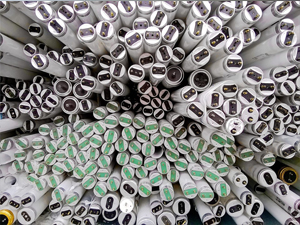 If you’ve ever found yourself standing in the hardware section of your local home improvement store, debating over which fluorescent tube to buy for a project, then this article is for you.
If you’ve ever found yourself standing in the hardware section of your local home improvement store, debating over which fluorescent tube to buy for a project, then this article is for you.
We will walk through the basics of how fluorescent tubes are rated and what they can do for you.
1. Determine the length of your fluorescent tube
The first thing you’ll need to do is determine the length of your fluorescent tube. If you’re not sure, just measure the distance from where it will sit on one end to where it will sit on the other (length x width).

Then subtract a few inches for ease of wiring and installation.
2. Find out the width of your fluorescent tube
The next thing you’ll need to do is find out the width of your fluorescent tube. This one’s easy: just look at whatever packaging it came in or measure its circumference by wrapping a measuring tape around it where it will sit on the fixture.
You should be able to find this information in the instructions on the tube. If not, you can find it online with some quick research.
3. Find out how much light you need to use for a specific space
The next important thing to do is find out how much light you need for a specific space. There are many different factors that affect this, including the size of your room and what it will be used for.
A good rule of thumb is at least 40 lumens per square foot (the amount of visible light emitted from one surface).
4. Calculate the distance between each bulb on your tube
Now you’ll need to calculate the distance between each bulb on your tube. You can do this by dividing the length of your fluorescent tube (in feet) by twice its width, and then rounding up.
If you’re not sure how many bulbs will fit into your fixture, it might be helpful to check out this table which explains nationwide regulations for distances based on shape and wattage-to-lumens ratio.
5. Decide if you want one or two tubes

The last thing you’ll need to do is decide if you want one or two tubes, and what type they will be. This can be a little confusing so here’s an easy way to figure it out: take the length of your fluorescent tube (in feet) and divide that number by four. If the answer isn’t even then double up on all bulbs in either direction until it becomes evenly divisible by four.
6. What type (single-ended or double-ended) they will be?
The next decision you’ll need to make is what type of fluorescent bulb they will be. Single-ended lightbulbs are great for general lighting, while double ended bulbs help provide ambient and task lighting with the same amount of wattage in a single fixture.
7. Choose which kind of ballast to use with your new lights ( magnetic/electronic)

The next decision you’ll need to make is what kind of ballast to use with your new lights. There are two types, magnetic and electronic. Magnetic ballasts work well for T12 bulbs while electric ones excel at working with fluorescent lamps that have a different shape, such as U-shaped or circular tube shapes.
If you’re wondering which type will be best for you, the answer depends on how old your current equipment is and whether it’s operating normally (meaning not flickering). It might also help if we know more about the space where this light fixture would be situated: an office building? A warehouse? A store front? An art gallery?
The point here is: don’t feel like there needs to be a definite answer. Take the time to research your options and make sure you’re making an informed decision because it’s better to take more time now than regret something later on down the road!
8. Color temperature
The last thing to think about when choosing your new fluorescent bulb is color temperature. That’s because there are three different types: warm, cool or daylight/cool white.
Warm bulbs have a yellow tone that gives off a cozy feeling and won’t hurt the eyes after hours of use. They’re great for residential spaces like living rooms, kitchens and bedrooms – but not ideal in commercial environments where you might be looking at screens all day long (like an office).
Cool bulbs work best during daytime hours since they mimic natural sunlight; also good if you want to feel more awake during the morning!
Daylight or cool whites are perfect for retail settings due to their neutral hue which makes it easier on customers’ eyes as well as any workers
Conclusion
We hope this article was helpful in determining what size fluorescent tube you need. If you have any other questions, please feel free to leave a comment below!
Thank for reading and we’ll see you next time on the blog!
